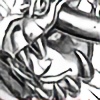HOME | DD
 Gambargin — Lady Ragna of Kongeriket Norge (Norwegian)
by-nc-nd
Gambargin — Lady Ragna of Kongeriket Norge (Norwegian)
by-nc-nd

#denmark #historical #medieval #sketch #war #warrior #women #womenwarrior #medievalwomen #hisanachronism #norway #norwegian #shieldmaiden #viking
Published: 2014-09-16 03:37:19 +0000 UTC; Views: 14561; Favourites: 239; Downloads: 0
Redirect to original
Description
THIS DRAWING IS OUTDATED - PLEASE SEE
A concept drawing of the Medieval post-viking Norwegian Shieldmaiden/Woman Warrior as part of the Historically Wrong Sketch Series: Medieval Revisited which aims to portray Women Warriors of various cultures in a fictitious historical settings based on AD 800s - AD 1400s era of warfare. Kongeriket Norge is indeed, the original name for the Kingdom of Norway, the official name of the country itself. I wanted to used Kingdom of North, or Kongeriket Nord but uh...that may lead to misconception
Inspired by the Music: City of Birka by Andreas Waldetoft
Disclaimer: I am by no means expert in History, just a humble man with passion for learning history. Also, English is not my first language so if you do find any errors or would like to make a correction/feedback, please feel free let me know
INTRODUCTION
The Norwegians Viking were not only famous for their raids, but also from their Settlements and Voyages. The majority of Modern day Sottish Islands were inhabiited by Norwegian settles during the Viking age, and to the extend, large settlements in Ireland like Dublin, were also founded by Norwegian settlers. While these Norwegian Viking shared the same ferocity as their southern Danish Neighbors, they voyages have outdone the rest of the viking world, attributed to their discovery of Iceland and later, Newfoundland in Canada (Making them one of the earliest discoverer of America before Columbus). Christianized Norway also shared their forefathers ambition, whose kings tried to claim the throne of England but eventually failed. Later period in the middle ages saw Kingdom of Norway as one of the poorer Scandinavian domain, which eventually became lesser partner in the Kalmar Union.
DRAWING COMMENTARIES
Drawing the character has been somewhat a challenge for me. First, because of time constraint which i managed to steal in between my schedule, second, trying to come up with the portrayal of Norwegian shieldmaiden than the normal Viking Shieldmaiden which we have became too familiar with. Interestingly enough, from what I have read, When Christianity came to Scandinavia, especially in to the northern part of the peninsula (Both Sweeden and Norway), it penetrated in a much slower pace as compared to Denmark. The same goes with the influence of European feudalism, or for the most part of the 10 - 11th century, the armaments as depicted here for Lady Ragna Erlingsdatter. The lamellar armor she wears is a strike contrast to the ones commonly worn in western europe of that time, which, in her case, is a stylization of the ones worn in eastern Europe (probably obtained in earlier era, from trade or raid). The rest of the armaments are generic stylization of Viking equipments, which may or may be inaccurate.
In order to emphasize the "Norwegian image" of the drawing, I included the Stave Church drawing in the background, based on the design of Heddal stavkirke in Heddal. Though, whether or not this is effective its entirely up to the reader
Dedicated to , as well as the norwegians of DA like and (Have i missed anyone from norway in DA here? please let me know 
REFERENCES AND OTHER RELATED MEDIA HISTORICAL COMMENTARIES
Drawn as part of the Nordic Alliances in the Historically Wrong Sketch Series , whose aim is to portray the post-viking Christianized Scandinavia, including the Kingdom of Denmark, Sweden and Norway.
May relate to the following:
The native North American: , the Byzantines and the Irish ,
A Part of the Historically Wrong Sketch Series: Medieval Revisited - You can find more on the various faction on the map here:
(is under Revision)
The Norwegians were perhaps famous during the Viking age for their exploration and voyages, which led to their settlements of Iceland, Faroe Islands, Greenland, parts of Ireland as well Britain. Though, in comparison to the Danish, their presence in the British Isles remains somewhat less significant. Interestingly enough, cities like Dublin, Limerick and Waterford in Ireland were founded by Norwegian settlers. They were also one of the earliest people who sailed to America, when their Norse ancestors reached as far as northern coast of Canada where they made contact with Skræling, which is speculated to be the Thule people, proto-Inuits who settled in the area.
Anyway, the nordic legacy slowly met its end when Christianity was brought to the land. The introduction of Christianity into Norway is generally attributed to Olaf Tryggvason, the first Norwegian King. His origin and life is still a subject of many speculation and debate, but story goes that he converted into Christianity during his time plundering in the British Isles. He met a hermit seer in the islands just off the coast of cornwall, and was foretold of great mutiny amongst his men and his conversion to Christianity. He was skeptical at first, but the Mutiny actually happened, to his surprise. Convinced by the seer, he then converted into Christianity and was baptized near Andover, somewhere in 994. After his conversion, he stopped raiding england and sailed back to Norway, building the first church in Moster. His successors, St. Olaf (Olaf II of Norway) and Haakon the Good (The first christian Norwegian King), attempted to spread the new abrahamic faith even further, but progress was very slow, and even Haakon attempt was rejected at first. This goes the same with the spread of feudalism which was not incorporated fully compared to the Western European world, though the ruling class and administration reflected a strong feudalistic tradition.
Historically speaking, In the later stage of medieval era, Kingdom of Norway was in a rather less-than-light position as compared to the glory of their viking forefathers. The death of Haakon V in 1319, left the young Magnus Erikson to rule the throne, proclaimed as Magnus VII of Norway. The popular movement of that time also lead him to be crowned as King of Sweden as well, becoming both King fo Norway and King of Sweden. It was also by this time, that the Hanseatic league was putting more and more pressure onto the Norwegian nobility to give them concessions, which did not go well with Norway. When the Black Death hit Norway, thw whole economy was devastated and left the Kingdom in a pretty poor state. Regardless, After a few successions and dynastic union, Norway entered into dynastic union with Sweden and Denmark, which resulted in the birth of the Kalmar Union, which strengthen the position for the Nordic Countries, against the hanseatic league.
The Kalmar Union was fragile at best however, and when Sweden broke apart in 1521, Norway tried to follow the swedish footsteps. Unfortunately, the ensuing rebellions was put down and destroyed, and Norway remained in personal union with Denmark till early 19th century. The period is often regarded as the 400 Year Night in Norwegian history, where most, if not all of the ruling elites, intellectuals and bureaucrats were centralized in Copenhagen, Denmark 
Related content
Comments: 38

But Norwegians didn't find America, Icelanders did. And Iceland is a Scandinavian culture as well. Not to mention that Iceland's history has been Scandinavian for more than 1000 years, the Icelandic language is Scandinavian, most Icelanders consist of ethnic Norwegians and the Icelandic customs are Scandinavian.
👍: 0 ⏩: 1

Thank you for the information. It'll help me to revise the description.
👍: 0 ⏩: 0

Olav/Olaf tryggvason was norway's sixth king. not its first. The first was Harald hårfagre(fairhair), who united the 30 or so petty kingdoms of norway into one nation.
also, håkon the good was Tryggvasons predeccessor(he was the third king), not his succesor.
This isnt complaints against the picture though, its great, just against the horrible inaccurate description of norways early years.
👍: 0 ⏩: 1

Thank you for the correction and the compliments. I will fix it later
👍: 0 ⏩: 0

I love her hair and that smile 
Hayley
👍: 0 ⏩: 0

I can see what became of the Vikings after the death of Harald the Ruthless.
His death is taken as the date for the end of the Viking age.
👍: 0 ⏩: 0

Simoly adorable 
👍: 0 ⏩: 1

Wow! Awesome!
but why not using black pen instead of blue?
👍: 0 ⏩: 1

Thanks Jean!
Ah, it's originally black and white sketch, but I adjusted the temperature to be a bit blueish to give a "colder" image
👍: 0 ⏩: 1

Ah ok; myself prefer when you do black for historical women and blue for syfy
👍: 0 ⏩: 0

Beautifully done, as always! 
👍: 0 ⏩: 1

Indeed, Sweden will come next
👍: 0 ⏩: 0

Colour me intrigued, but what medium is it that you have used?
👍: 0 ⏩: 1

Thanks Paulus!
I used my technical pencil and 0.1mm drawing pen for the lineart and shading. Then post-process it (contrast, temperature and exposure) in Microsoft office picture manager. You can find the detailed description here
👍: 0 ⏩: 0

I like this! Still young and open, not yet burned bone-tight by the ugliness of death and loss that the years will bring....
👍: 0 ⏩: 1

Yeap, as written in the description. It is based on the one in Heddal
👍: 0 ⏩: 1

The people in the background look good, I think you're getting better. I always love when you post your art, because of the wonderful historical notes underneath! It's a real pleasure to learn these things!
👍: 0 ⏩: 1

Glad you like it and learn something from it
Drawing and learning the history at the same time is actually pretty fulfilling in my opinion
👍: 0 ⏩: 0

Hurray! I'm really happy you choose to show the eastern/byzantine influence that was an important part of Scandinavian/eastern-european culture.
👍: 0 ⏩: 1

Indeed! I'm glad you like it. It could well be that she may ended up in Byzantine service, depending on career choice
👍: 0 ⏩: 0

Very interesting; I learned a lot. I really like this piece, especially that lovely church in the background. ^^
👍: 0 ⏩: 1

Thanks Eva, the actual church is beautiful if you look at the photo
👍: 0 ⏩: 1

You're most welcome Gin. ^^
There's a photo?
👍: 0 ⏩: 0

I think this one turned out very well.
Kudos for putting history into the description as well.
👍: 0 ⏩: 1

You're getting so good at background people and the architecture. They've become a lot more solid and I like the guy with the fur clock in particular! Her face is great and I like how you did the hair.
👍: 0 ⏩: 1

Thank Ermerk! I'm still trying to refine my background bit more, though they are all still lined with pencils not pen, to emphasize more on the main character.
👍: 0 ⏩: 1

Indeed, that's a good choice 
👍: 0 ⏩: 0























